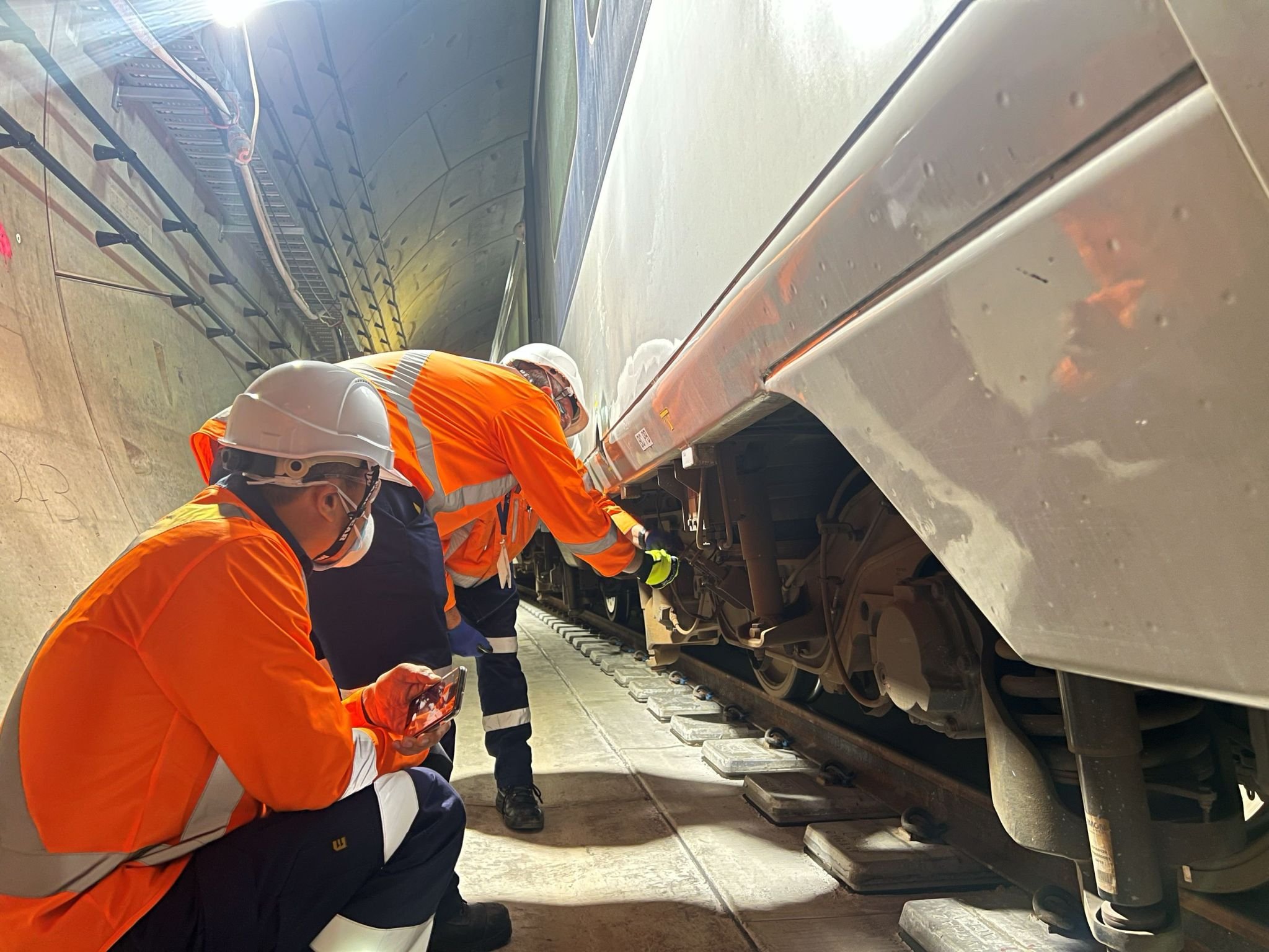Before passengers can use CRL, we are carrying out a huge programme of testing in conjunction with our partners.
This is to ensure all the new systems are working together and are seamlessly integrated into Auckland’s existing rail network.
What we are doing
Once CRL is constructed, we need to test everything before it can open.
There are a huge range of systems that need to be tested on the CRL, from signalling for the trains to running the air conditioning in the stations.
Testing everything is a complex operation that will take months. Not only does each system need to work as planned, but all the systems need to work together in integration. This includes integration between the:
Newly installed infrastructure and systems of the CRL
Existing systems on the trains
Existing wider rail network systems
Existing Auckland Transport IT and communication systems.
A new control centre at Maungawhau will provide a place to monitor and control all the systems across the new stations – including Waitematā (Britomart).
The Auckland Rail Operations Centre will enable changes to the existing traction power and signalling control systems to be implemented.
Control centres and the way they integrate with the CRL and the wider network require testing too.
The integrated systems must work effectively to support the safe and efficient operation of the trains, stations and other service infrastructure. They require high-level and specialist technical knowledge.
It’s not just a matter of flicking a switch or connecting one piece of machinery to another.
Train drivers also need to become very familiar with the twists and turns of the tunnels.
All up there are 31 test plans our experts need to work through and tick off once they’re completely satisfied.
Preparing the existing Auckland rail network for the operation of a completed and brand new CRL requires the integration of new systems, infrastructure and processes into a network that already exists.
Fact Sheet - Preparing for 2026
To read this full screen, press on the square symbol at the bottom right of the box.
The document then opens in a new tab. Press the escape key to return to this page.
To download, when you view full screen, depending on your browser, there is an arrow at the bottom right of the screen - click on that.
Working with our partners
By putting the new equipment and sub-systems into service, we can prove they physically and functionally act together as a single integrated and co-ordinated system including integration with:
The infrastructure and systems provided by various contractors including our construction partner, the Link Alliance.
The existing train-borne systems.
The existing wider rail network systems.
The existing Auckland Transport IT and communication systems.
Timeframe
Testing and commissioning will be achieved through progressive test stages in various geographical areas of the system.
Systems Installation Testing
Once the systems are installed such as CCTV, security, and station control systems, they are tested to make sure they work correctly.
Systems Integration Testing
Systems are tested in a virtual testing facility first. Then again tested once installed to make sure they talk to each other and work with the existing network.
Train Running Tests
Train running tests happen in stages. The first train went into the tunnels very slowly (5km/h) on 12 February 2025.
Over time, train tests are carried out at increasing speeds, and the number of trains tested also increases.
The trains test for a variety of objectives:
Clearance checks – making sure the trains fit
Ensuring signalling, track and overhead power all function correctly
Safe distances between multiple trains in the tunnels
Testing the performance of the CRL – such as noise, vibration and passenger journey times
Successful performance of the tunnel and station systems
Checking all procedures to maintain and operate the CRL work.
Emergency Testing
Testing is carried out with emergency services, including evacuation trials, scenarios for fire, medical, and security related events.
Shakedown Tests
The final testing phase before the CRL reaches practical completion. This is where everything on the CRL is checked to be ready for handover.
Once these test stages are completed, CRL Ltd will handover to KiwiRail and Auckland Transport.
This is expected to occur by the end of this year.
Following handover, the final stage of testing must be completed before the CRL can be used by passengers.
Trial Running
Trial running is where Auckland Transport, rail operator Auckland One Rail, and KiwiRail practice their operation of the CRL to refine their procedures and grow competency in the operation of the CRL.
Trial running includes some trains being run across the entire Auckland network. Trial running will validate passenger journey times across the network as well as the reliability of all CRL systems.
Trial running is also used to validate the reliability of the CRL systems.
Once Auckland Transport and KiwiRail have finished, the CRL will open to passengers for day 1.
Videos tell the story
Our former CEO discusses the Testing and Commissioning stage
“New Zealand has never built an underground metro railway before. Simply put, it is a case of not knowing what we don’t know until we test it”










